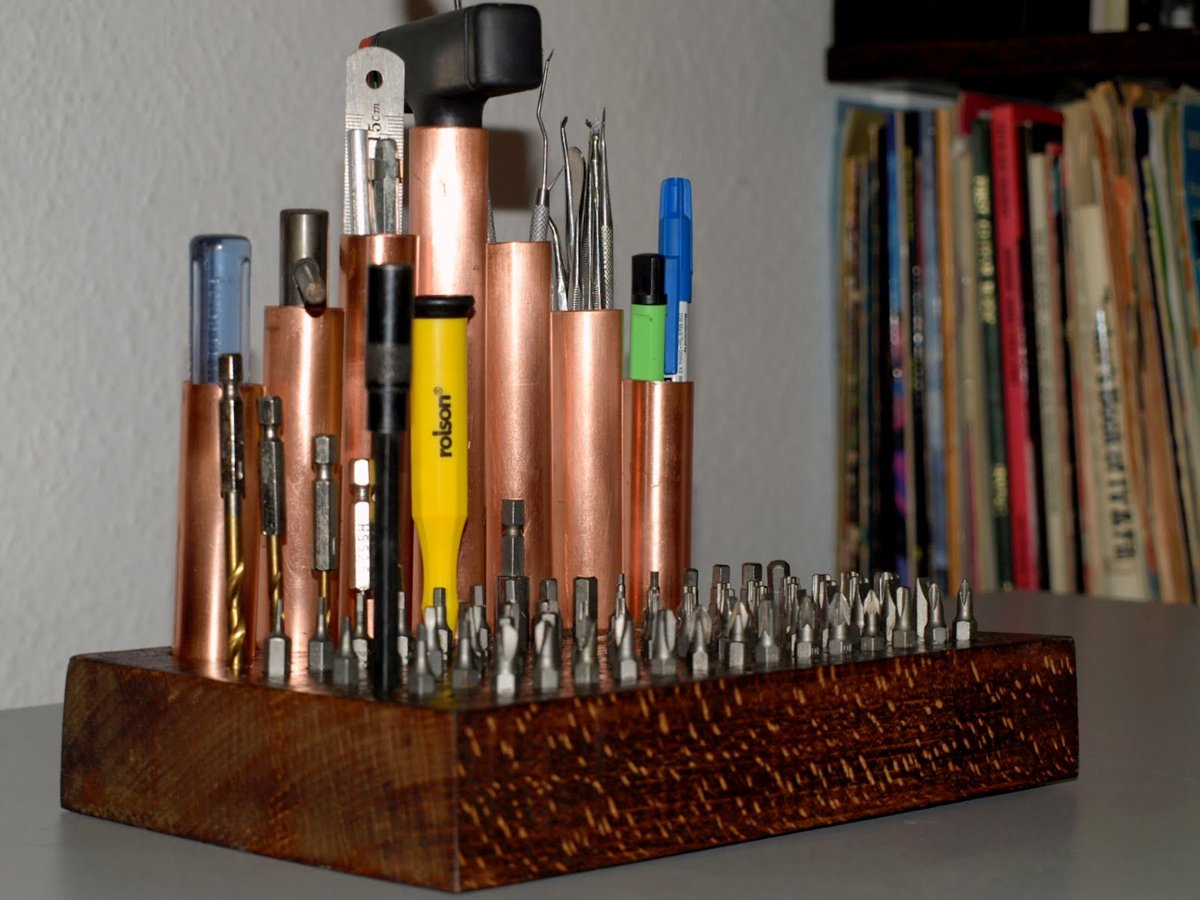A tool tidy is a great project to fill up a quiet afternoon. I remember my woodworking teacher setting the task of making a workbench organizer. I was about 10 years old and thrilled at the thought of using real wood and proper workshop tools.
Fast forward 20 or so years, and I find myself sitting at my own workbench with a pile of screwdriver tips, picks, pincers, and assorted small tools in need of a home. It’s time to revisit my school days and make an improved version of the organizer that taught me how to use workshop tools.










